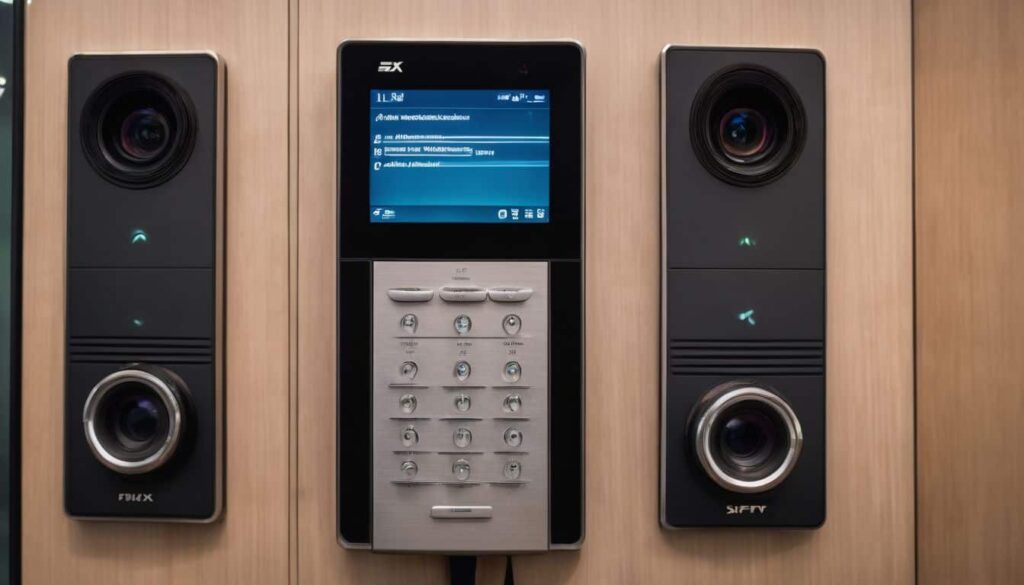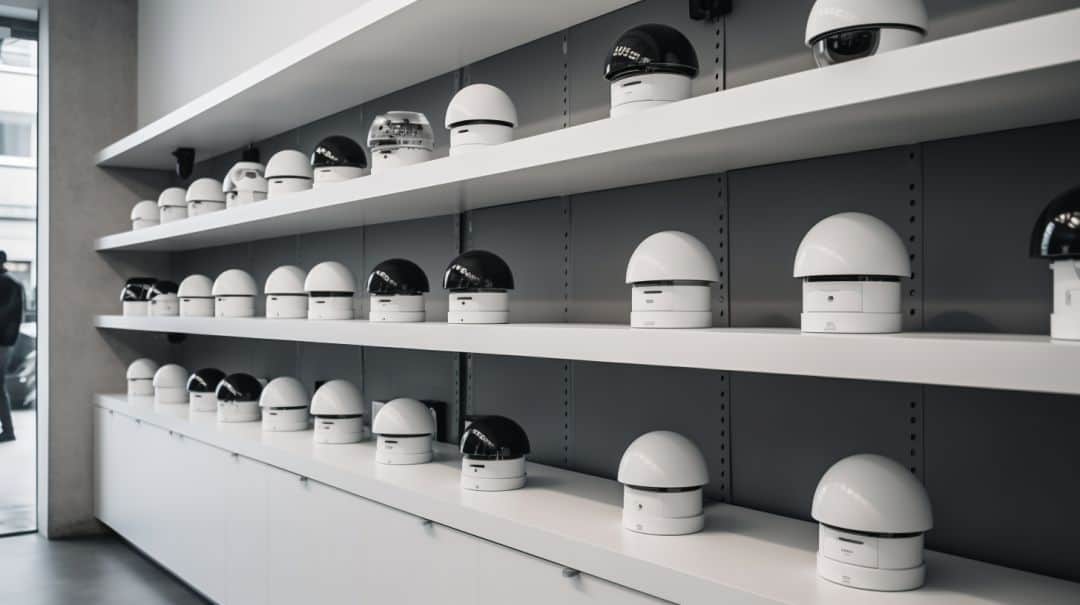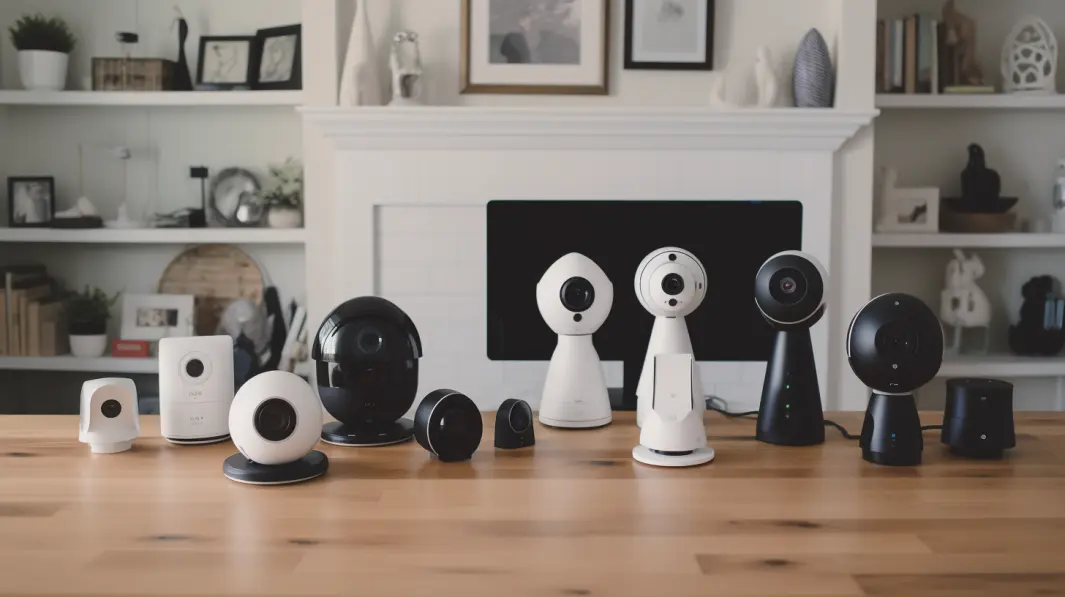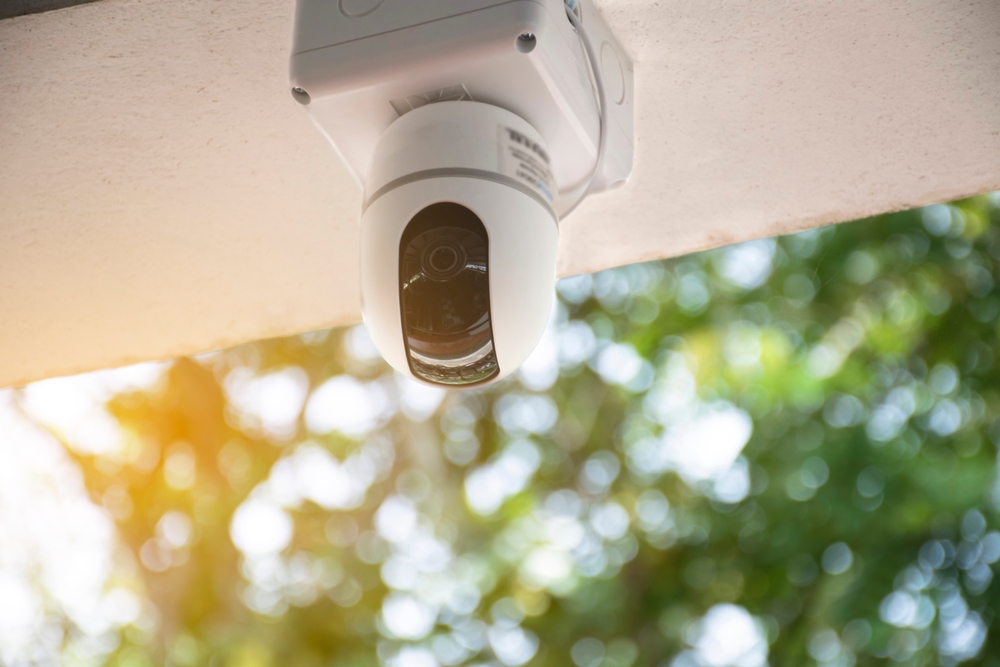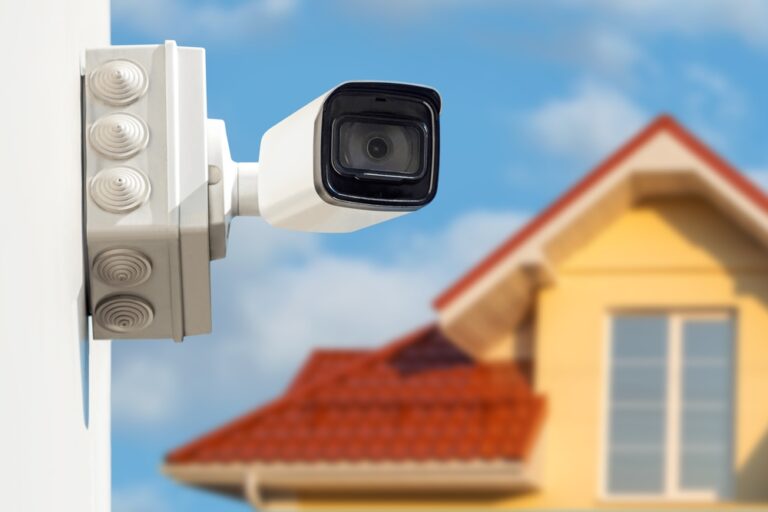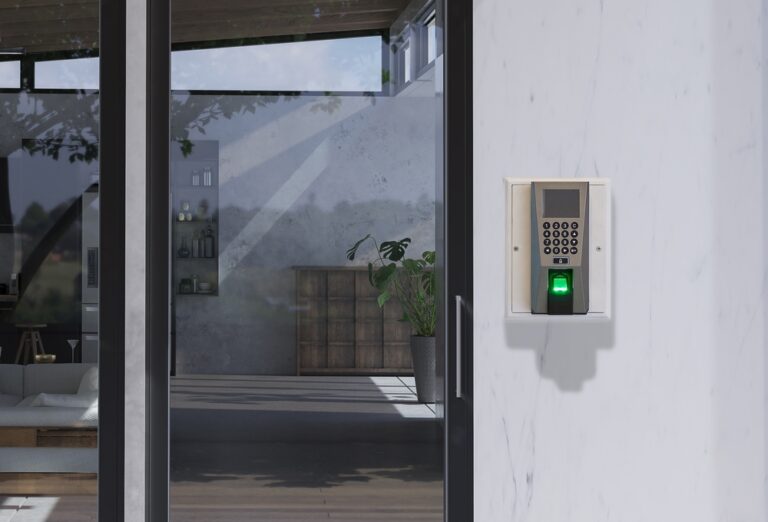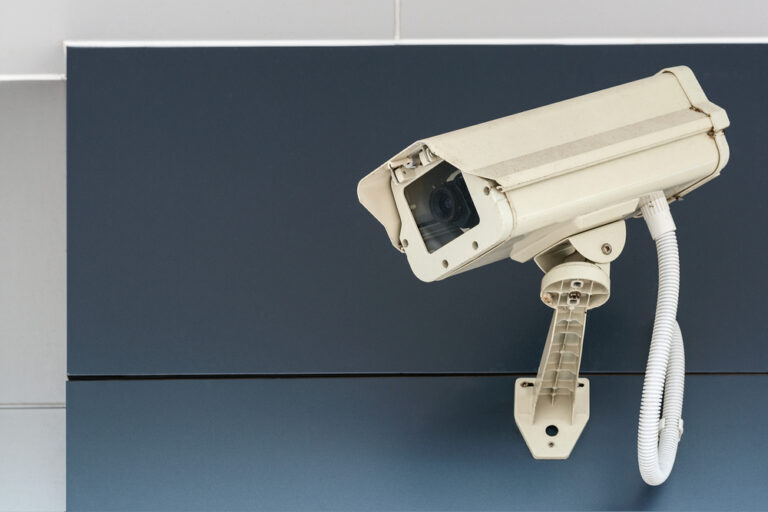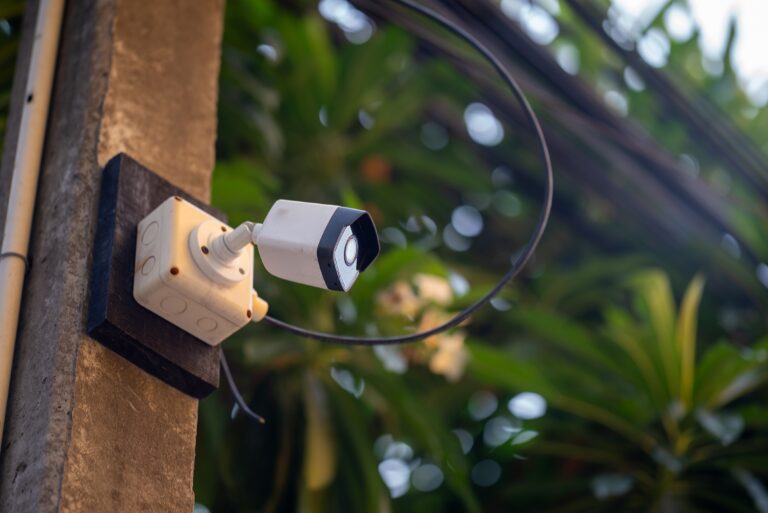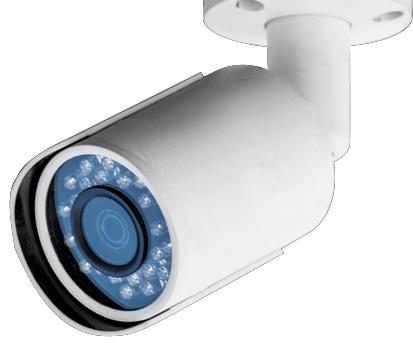- 1) Key Takeaways
- 2) Understanding Intercom Systems
- 3) Components of Intercom Security Systems
- 4) Types of Intercom Systems Based on Functionality and Use
- 5) Key Features to Consider When Choosing an Intercom System
- 6) Real-Life Applications of Intercom Systems
- 7) The Future of Intercom Systems
- 8) Conclusion
-
9)
Additional FAQs
- 9.1) What is an intercom system?
- 9.2) How does an Intercom System Work?
- 9.3) Why might I need a commercial intercom system?
- 9.4) How do I choose the right intercom system for my needs?
- 9.5) Do all Intercom Systems Include Video Features?
- 9.6) Can Intercom Systems Be Integrated With Other Security Measures?
Choosing the right intercom security system can seem like a daunting task with so many options available. Did you know that modern intercom systems offer more than just audio communication, including features like video verification and smart building integration? This comprehensive guide will demystify intercom systems for you, leading you from basic knowledge to understanding advanced features.
Get ready to gain the confidence needed for making an informed decision about your security needs!
Key Takeaways
- Intercom systems help with two-way communication and security in buildings. They can be stand-alone or part of a bigger network.
- Different types of intercom systems include audio, video, telephone, networked, wired and wireless forms.
- Key parts of an intercom system are the base station, substations, directories, connectivity options, electronic door locks, and power supply.
- Your choice for an intercom system should depend on your needs for functionality and use. Always remember that a reliable power supply is vital for its operation.
Understanding Intercom Systems
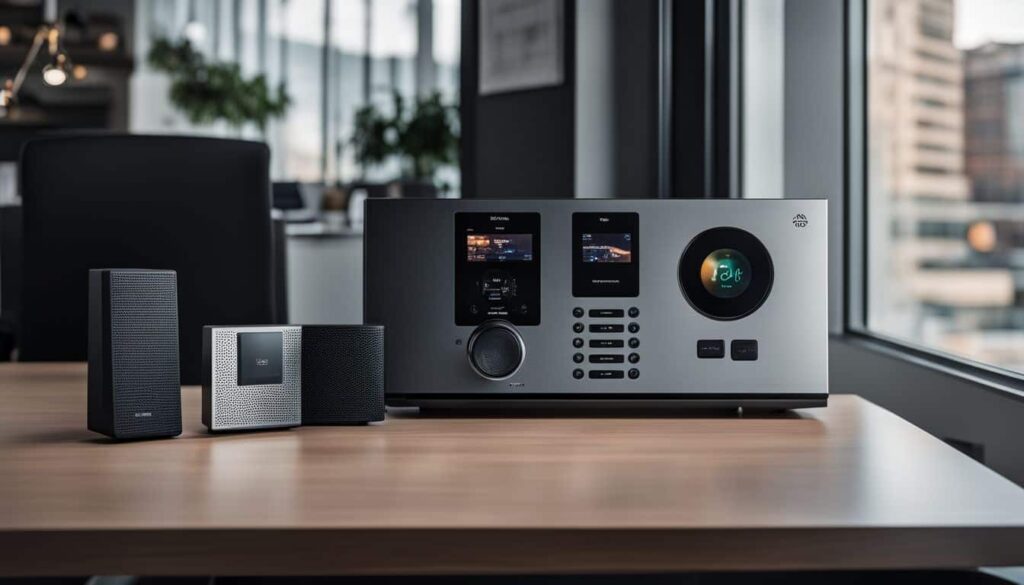
Intercom systems, or intercommunication devices, facilitate two-way communication across different spaces. These versatile mechanisms come in an array of types and models designed to meet specific requirements.
Whether it’s enhancing security or improving convenience, understanding the workings and components of these systems is crucial before considering installation. From standard audio intercoms used for basic voice communication to advanced video intercoms that provide visual surveillance capabilities, each system holds unique functionalities based on user needs.
What are Intercoms

Intercoms are communication devices used to transmit and receive voice or video signals. They provide a vital link between different segments of a building, facilitating seamless two-way interactions between occupants.
Serving dual functions in communication and security, intercoms enable people inside the building to verify visitors’ identities before granting access. These systems can stand alone or integrate into extensive networks for broader control and visitor management.
From simple doorbell functions to advanced smart features, modern intercoms ensure optimized convenience alongside robust security measures.
Different Types of Intercom Systems
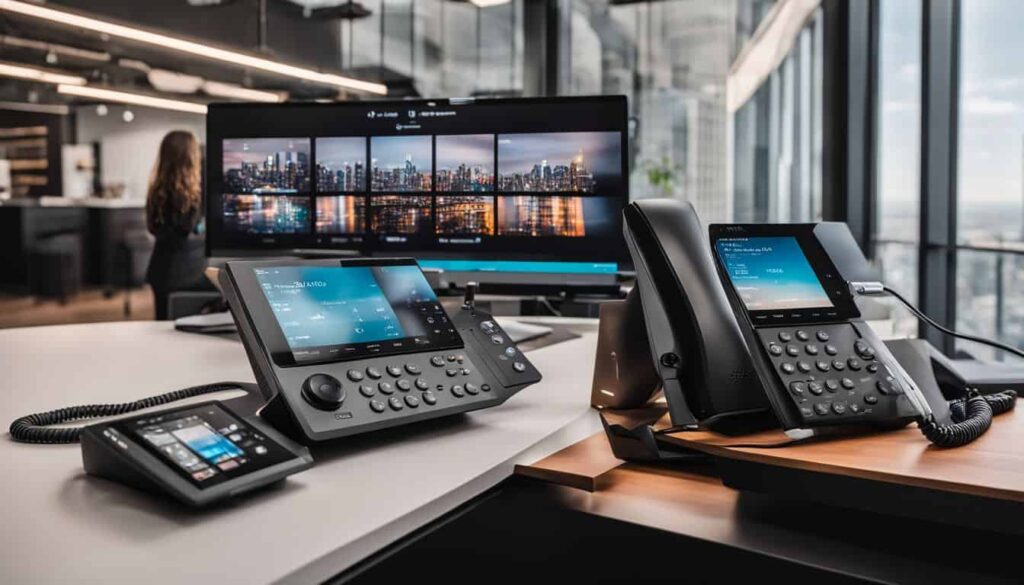
Intercom systems offer wide-ranging functionalities catered to diverse security needs. Here are some common types:
- Audio Intercom System: This allows for two-way audio communication between occupants and visitors, making it a simple but effective entry system.
- Video Intercom System: Considered the most secure option, video intercoms provide both audio and visual identification of visitors.
- Telephone Intercom Systems: In this setup, the intercom works via phone lines, allowing residents to receive calls from the entrance panel directly on their telephone.
- Networked Intercom System: These sophisticated systems have become increasingly popular with their ability to connect multiple buildings or locations together, often integrating with wider access control networks.
- Wired Intercom Systems: These traditional intercom solutions use wires for connectivity and are known for their reliability and uninterrupted service.
- Wireless Intercom Systems: Offering flexibility in installation and usage, wireless systems rely on radio frequencies or internet connection and can be integrated with other devices like smartphones for added convenience.
Components of Intercom Security Systems
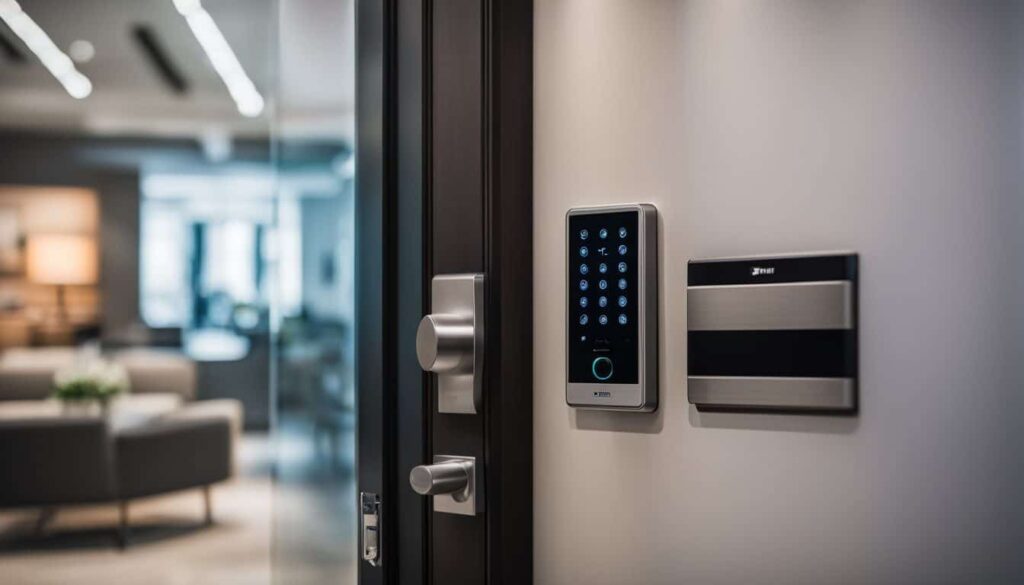
The base station is the heart of an intercom security system, where signals are received and sent out. Substations act as satellite units, enabling extended coverage across your premises.
Directories provide a list of stations for easy communication access within the system. An electronic door lock can be integrated with the intercom for added security, allowing controlled entrance only upon verification through the device.
Connectivity options range from wired to wireless systems based on individual needs and preferences. Lastly, a reliable power supply ensures continuous operation essential for maintaining constant surveillance and communication in secured areas.
Base Stations
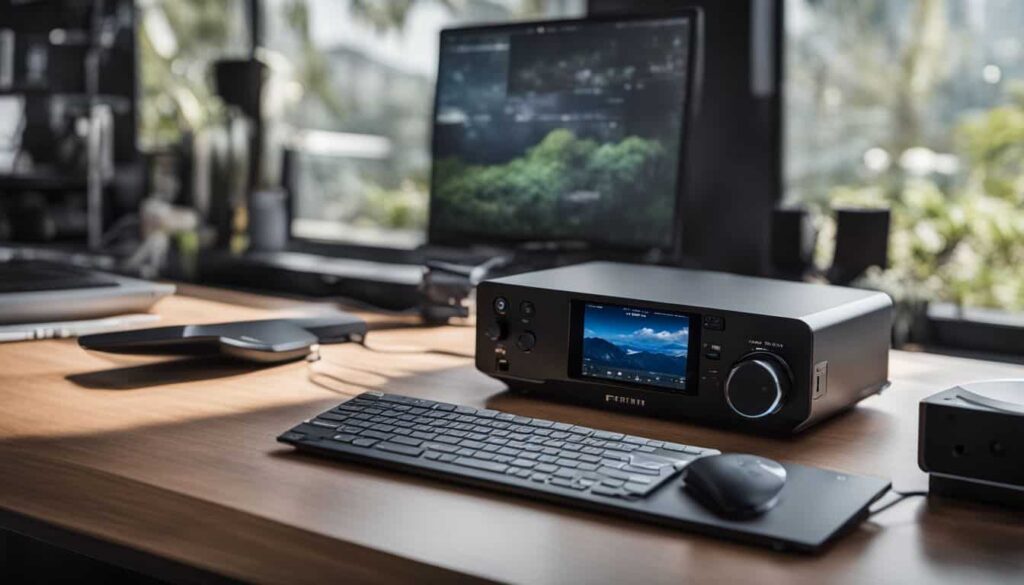
Base stations serve as the central control hub in intercom systems. They house essential components like buzzers, directories, microphones, speakers and video cameras. These crucial devices aid in communication and security functions of the system.
They interact with substations throughout a building or facility to ensure seamless coordination for effective communication and control. Base stations also store directories containing names or unit numbers of all users within a structure, facilitating convenient contact discovery for visitors or staff members alike via user-friendly interfaces on their panels.
Notably, these high-tech hubs are compatible with various connectivity options such as hard-wired connections, LANs (Local Area Networks), WANs (Wide Area Networks), or wireless networks that transmit signals across different points of interaction – from base stations down to individual substations around your premises.
Some innovative models even utilize Power-over-Ethernet technology which effectively eliminates the need for dedicated cabling – an approach that significantly reduces installation costs while enhancing efficiency.
Substations

Substations serve as a crucial component in the operation of an intercom system, functioning to receive and respond to visitor access requests. They encompass traditional devices, pre-existing laptops, or smart gadgets, all the way to mobile devices equipped with specific intercom apps.
The role of substations extends further by transmitting audio and visual signals between the base station and any visitors. Their integration with other parts such as directories, connectivity systems, electronic door locks along with power supplies guarantees seamless operation of the security solution provided by an intercom system.
Through this intricate infrastructure setup for system management within entry systems, substations contribute significantly towards ensuring a comprehensive security solution.
Directories
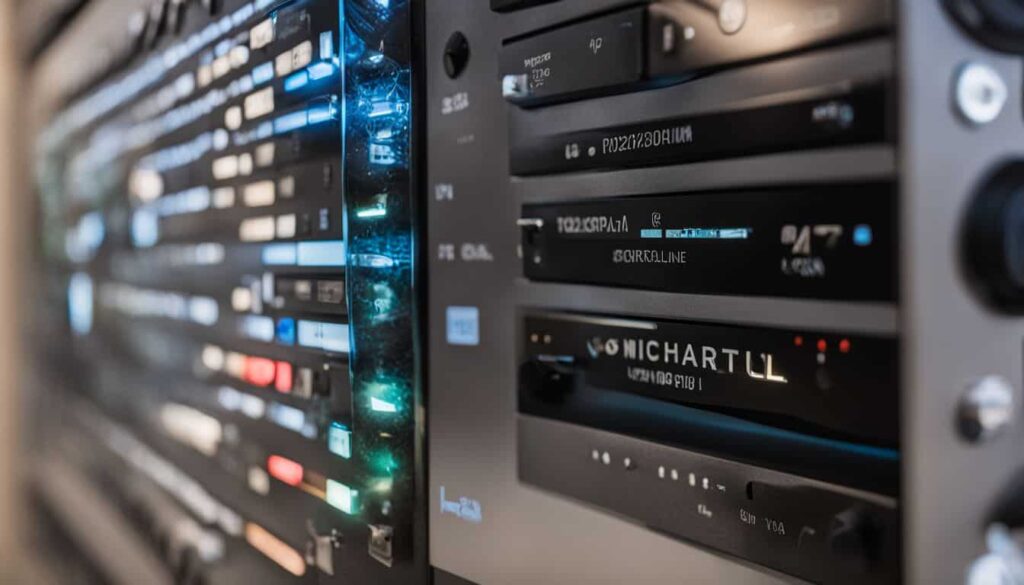
Directories form an integral part of intercom systems, enhancing their functionality and ease of use. Stored within base stations, they contain all the crucial information including the names or unit numbers of all users within a building.
This stored data enables visitors to swiftly search for and locate the contacts they need, offering convenient access while maintaining building security.
Visitor management becomes more streamlined with the help of directories. They support reliable record-keeping software that aids in validating visitor identities efficiently and accurately.
Moreover, directories contribute to producing high-quality audio and visual information during intercom system communication which enhances both security measures and user experience tremendously.
Connectivity

Connectivity anchors the effectiveness of an intercom security system. Choosing between hard-wired systems, local or wide-area networks (LANs or WANs), and wireless networks depends on your specific needs.
Hard-wired intercom systems offer high reliability by avoiding interference or signal loss, presenting a proven choice for many businesses and homes. On the other hand, cloud-based intercom systems utilize Internet connectivity to provide flexibility with remote access features and automated updates.
Interestingly, Power-over-Ethernet (PoE) can be adopted in certain setups to reduce installation cost by eliminating dedicated cabling requirements.
Electronic Door Locks

Electronic door locks serve as a critical security feature in intercom systems. They function by securing an entrance and only allowing access when the correct confirmation is received from the intercom system.
This interaction between the electronic lock and intercom plays a vital role in enhancing security. The technology behind these locks varies, but they generally fall into two categories: electromagnetic locks and electric strike locks.
Electromagnetic versions use magnets to secure doors, while electric strikes modify traditional lock mechanisms with electricity for added control. Due to their complex nature, their installation needs professional handling to ensure proper functioning and maximized security benefits.
Power Supply

Intercom systems depend heavily on the power supply to function properly. The type of intercom system you choose will determine your power needs. For instance, 3-wire intercom systems, often recommended for buildings with fewer than 30 units, require a particular power configuration.
However, if you need an intercom system for larger structures housing up to 100 units, a 4-wire setup might be more suitable due to its capacity and robustness. Keep in mind that extending a 3-wire system beyond its maximum capabilities can lead to the necessity of switching out the entire system.
Make sure your infrastructure can support your chosen intercom’s power requirements to ensure optimal performance and added layer of security.
Types of Intercom Systems Based on Functionality and Use

This section addresses the various types of intercom systems, based on their functionality and use. It covers essential categories such as audio intercom systems that convey sound only, video intercoms offering visual communication, telephone intercoms integrating with your phone system, networked systems connecting multiple buildings or rooms, and wired or wireless options depending on installation requirements.
Audio Intercom System
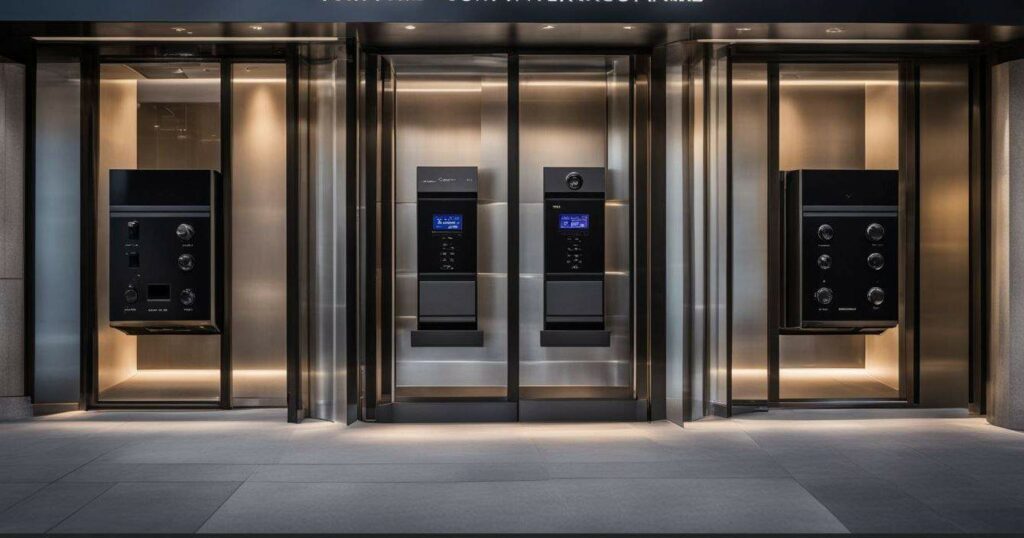
Audio intercom systems are a vital part of building security measures. They provide two-way communication, allowing occupants to verify the identities of visitors before granting them access.
Ranging from simple doorbell intercoms to sophisticated systems integrated with smart building technology, audio intercoms play a crucial role in ensuring security and convenience.
Touchless models and those integrated with phones or cell phones are becoming increasingly popular for their versatile functionality. Whether it’s a residential apartment or commercial space, an audio intercom system offers an added layer of security and helps create a comprehensive security solution.
Video Intercom System

On a technical level, video intercoms fall under the category of functionality-based intercom systems alongside other types such as audio and telephone. Owing to continuous advancements in technology, today’s video intercom frameworks can seamlessly combine with artificial intelligence (AI) and Internet of Things (IoT) technologies.
In light of these trends, it becomes clear that future iterations will continue pushing boundaries to deliver even more robust security solutions.
Telephone Intercom Systems

Telephone intercom systems serve as an essential security feature, allowing for efficient communication between different rooms or sections of a building. These systems can be standalone tools or components of broader access control networks.
They come in various forms such as intercom doorbells and speaker systems, some even offer video capabilities for enhanced security. Telephone intercoms also provide flexibility when it comes to wiring – from 2-wire configurations to fully wireless installations, you have the freedom to choose what works best for your needs.
Moving forward, we expect these telephone intercom technologies will boast advanced features like improved encryption and motion detection as part of their primary function set.
Networked Intercom System
Networked intercom systems offer a modern solution for communication and security needs. Unlike traditional wired or wireless options, these systems leverage the power of IP network connections for seamless operation.
This allows users to access the system remotely from anywhere in the world, boosting convenience and functionality.
This type of intercom system excels in flexibility and integration potential. It can easily connect with other technologies such as surveillance cameras or electronic door locks, enhancing overall property protection.
Moreover, installation simplicity reduces set-up time while regular software updates ensure your system stays up-to-date with latest security measures. Despite requiring a stable internet connection for optimal performance, networked intercom systems prove invaluable assets in today’s interconnected era.
Wired and Wireless Intercom Systems
Wired intercom systems connect different rooms or locations with physical wires, providing a secure and uninterrupted communication line. However, they may be more complex to install due to the need for cabling.
On the contrary, wireless intercom systems use radio waves to transmit signals between devices, making installation easier and more flexible as no cables are required. They also offer portability which is ideal in large homes or workplaces where users frequently move around.
Despite these advantages, they can sometimes experience interference from other electronics that might affect signal quality. Regardless of whether you choose wired or wireless, both types fulfill their fundamental role: enhancing security by enabling two-way communication between occupants and visitors across various types of buildings.
Key Features to Consider When Choosing an Intercom System

When choosing an intercom system, scrutinize its range of capabilities. Ensure the audio and video quality meet your standards. Examine the ease of installation and operation. Consider the power source for suitability with your space.
Look at durability factors including weather resistance to ensure longevity in various conditions. Check if it integrates well with other devices in your security setup. Finally, guarantee a comprehensive security solution by evaluating specific security features on offer.
Range
Determining the range of your intercom system relies heavily on the specific needs and layout of your facility. Wireless systems can cover extensive distances but might require additional equipment like antennas or repeaters due to potential signal interference.
Different types demonstrate varying ranges based on their technology – for instance, networked intercoms cross boundaries by connecting different sites or buildings, offering remarkable scope and remote access possibilities.
It is essential to match the planned use with an appropriate range for unhindered communication.
Audio and Video Quality
Perfect audio and video quality elevate the functionality of an intercom system. They contribute to a more secure setting by enabling clear communication and visual confirmation of visitor’s identities.
High-definition video provides precise visuals, offering improved security by reducing instances of mistaken identity.
Audio clarity is essential in ensuring efficient communication between residents or office staff and visitors at the door. Interference-free sound prevents miscommunication, adding another layer to security measures.
Similarly, superior video resolution ensures you’re able to identify facial features or other distinct details that may not be clearly visible in lower-quality systems.
Installation and Ease of Use
Choosing the right intercom system involves understanding installation and ease of use. Firstly, wired intercom systems provide secure communication with minimal interference, but require professional installation due to complex cabling processes.
On the other hand, wireless or IP networked systems offer greater flexibility for placement and expansion but may need additional devices like antennas or repeaters to maintain strong signal strength.
It’s worth noting that these wireless solutions tend to be more user-friendly due to their straightforward setup procedures. Finally, regardless of the type chosen, an intuitive user interface is crucial for easy operation and control over the system’s features and settings.
Power Source
Intercom systems require a reliable power source to function effectively. Power-over-Ethernet (PoE) technology is often utilized, especially in wired intercom systems. This innovation reduces installation costs by eliminating the need for dedicated cabling since it draws power from the building’s main electrical system.
On the other hand, wireless intercom systems offer flexibility with options of being powered either by batteries or rechargeable ones. Battery-powered models are easy to install almost anywhere but anticipate more frequent battery replacements or recharging sessions.
Alternatively, some wireless designs can be connected to a standard electrical outlet using a power adapter offering more stability and less maintenance.
Durability and Weather Resistance
A reliable intercom system must boast both durability and weather resistance. For instance, systems ranging from simple doorbells to the more complex touchless and smart versions have varying levels of these crucial attributes.
Wired intercom systems tend to be a frontrunner in terms of security and reliability, showing superior resilience against harsh environmental conditions. Conversely, wireless options might require further enhancements such as additional antennas or repeaters for consistent connection, posing potential challenges to their durability and resistance to adverse climatic conditions.
Therefore, assessing the expected lifespan in diverse weather conditions should guide you whilst choosing an optimal intercom solution for your premises.
Integration with Other Devices
Intercom systems can effectively collaborate with other devices to enhance security and convenience. This crucial feature enables a seamless connection between wider access control networks, visitor management systems, and the core intercom setup.
It not only centralizes control but also simplifies tasks such as delivery management.
Wireless intercom technologies offer effective solutions by enabling mobile devices to function as sub-stations in larger complexes. Cloud-based options further broaden horizons, offering expanded capacity along with the advantage of remote data access for better monitoring and faster response times.
Ensuring proper installation is vital for these integrated setups to perform optimally.
Security Features
Modern intercom systems are equipped with numerous security features to enhance the safety of a building. For instance, video intercoms provide visual verification for visitor identity confirmation, adding an extra layer of protection.
In comparison to wireless options, wired intercom systems offer increased reliability as they experience fewer interference or signal loss issues. Networked intercom setups further amplify security through their ability to seamlessly integrate with other technologies like access control networks and visitor management systems.
Security measures such as encryption can also be integrated into these devices to help prevent potential hacking threats in wireless variants. These varied security advancements have solidified the place of intercoms in comprehensive building safety plans across various commercial and residential settings.
Real-Life Applications of Intercom Systems

Intercom systems find widespread use in commercial office buildings, offering seamless communication and added security. In residential buildings, these systems facilitate easy communication between residents and guests while enhancing safety measures.
Schools utilize intercoms for making announcements, conducting emergency drills, and maintaining a secure environment. Industrial sites benefit from the robust features of intercom systems that ensure efficient operations by bridging gaps between distant areas and fortifying security protocols against threats.
Commercial Office Buildings
In the bustling world of commercial office buildings, security remains a top priority. Intercom entry systems play a vital role in maintaining this safety. They help verify visitors’ identities before permitting access and protect both personnel and property from potential threats.
The type of intercom system used often depends on factors such as the size of the building, number of units, and specific security requirements. A small office might use a simple audio-based standalone intercom while larger complexes could require an integrated video intercom system connected to a wider access control network for enhanced security surveillance.
Many modern offices are embracing smart technology, opting for touchless intercom systems that integrate seamlessly with existing smart building infrastructure.
Residential Buildings
Intercom systems play a crucial role in enhancing security in residential buildings. They offer two-way audio and video communication, allowing occupants to verify the identity of visitors before granting access.
These advanced features are part of modern residential intercom systems that range from simple doorbells to touchless and smart systems.
The functionality goes beyond providing secure access; many intercoms can integrate with wider access control networks and visitor management systems. This comprehensive approach to security ensures that residents always have control over who enters their building while enjoying peace of mind at home or away.
The use of such cutting-edge technology presents an efficient way for residential buildings to handle visitor management seamlessly while maintaining high levels of safety for their inhabitants.
Schools
Intercom systems serve a pivotal role in school safety, acting as the first line of defense against potential intruders. Through video intercoms, schools can visually confirm the identity of visitors before granting access, further enhancing security.
This means more than just entry control; it allows teachers to focus on teaching and students on learning with fewer distractions or concerns about safety. Furthermore, integrating these devices with other security measures provides an all-encompassing safeguard for our educational institutions.
Innovative intercoms also support visitor management by maintaining reliable records through software applications – an added benefit appreciated by many schools today. All told, installing intercom systems significantly boosts communication capabilities while ensuring a secure environment conducive to quality education.
Industrial Sites
Industrial sites see a versatile use of intercom systems for security and communication. In these environments, verifying the identity of visitors before granting access to restricted areas becomes crucial, making video intercom systems an ideal choice because they provide additional visual verification.
Integration with other security measures like surveillance cameras and access control systems is commonly seen in industrial spaces, significantly enhancing the overall site security.
Inter-departmental communication within the facility benefits from these intercom entry systems as well, breaking down barriers between different units of operation whilst ensuring safety protocols are upheld.
The Future of Intercom Systems

Progressive leaps in technology hint at a promising future for intercom systems, characterized by the integration of Artificial Intelligence (AI), IoT connectivity, enhanced video capabilities, more wireless options, and advanced security features.
Curious about what these advancements could mean for your security needs? Stay tuned to explore these fascinating prospects in detail!
Integration of Artificial Intelligence (AI)
Artificial Intelligence (AI) is revolutionizing intercom systems by enhancing security and convenience. With AI integration, features like facial recognition and voice recognition become integral components of the system.
These advanced capabilities offer improved accuracy in identifying individuals, thus ensuring only authorized personnel gain access to specific areas.
Automation through AI plays a pivotal role in streamlining visitor management processes. This helps alleviate administrative burdens while maintaining high-level building security at all times.
In addition, integrated AI allows the intercom system to evaluate and detect suspicious behavior or unauthorized entry cleverly, offering an extra layer of protection. When potential breaches occur or risky activities are detected by the smart system, real-time alerts notify relevant parties instantly for immediate response actions.
Internet of Things (IoT) Connectivity
Embracing the Internet of Things (IoT) Connectivity in intercom systems ushers in a world of convenience and advanced security features. With IoT, users can access and control their intercom systems from anywhere using internet-enabled devices like smartphones or tablets.
It introduces enhanced functionalities such as remote monitoring and cloud-based management, transforming the way we secure our homes and offices. Furthermore, it permits seamless integration with other smart home automation systems for an all-inclusive security solution.
Enhanced Video Capabilities
Enhanced video capabilities are reshaping the landscape of intercom security systems, providing an increased level of safety and convenience. High-grade commercial systems like Avigilon’s Video Intercom Reader Pro employ a 5 MP camera for stellar image quality, whereas their H4 Video Intercom utilizes a 3 MP fisheye lens for broad-area coverage.
Users can take advantage of these cutting-edge features to identify visitors with greater precision before granting access. The future promises even more exciting advancements in this realm as two-way intercom systems may soon integrate superior resolution and improved low-light performance, offering detailed visuals regardless of ambient lighting conditions.
Moreover, the forthcoming integration of artificial intelligence (AI) can potentially boost efficiency further by introducing automated answering services based on voice recognition and predictive analytics.
More Wireless Options
Wireless intercom systems are expanding rapidly in popularity, given their seamless integration capabilities and user-friendly interfaces. They offer increased flexibility, eliminating the need for intricate installation processes associated with their wired counterparts.
Users can quickly set them up without requiring extensive wiring or professional assistance. These systems not only ensure effective two-way audio or video communication but also mesh well with smart building technologies and management solutions.
The rapid evolution of wireless technology is bringing forth more advanced options that further enhance convenience, efficiency, and security in residential and commercial settings alike.
Increased Security Features
Intercom systems are stepping into the future with enhanced security features that will revolutionize communication and safety. Technological advancements now offer more fortified intercoms, increasing protection against unwanted breaches such as hacking or unauthorized entry.
An exemplary model of this progression is Avigilon’s Video Intercom Reader Pro. This advanced piece integrates touchless access control, high-definition video, two-way call functionality, and an intercom doorbell.
This system also showcases AI-powered voice for enterprise-grade call routing making it an ideal choice for commercial offices and multifamily residential installations. The beauty of such advanced technology lies in its compatibility with other technologies like video surveillance and access control systems.
This integration amplifies overall security measures offering a comprehensive and unified security infrastructure to users.
Below are some of the commonly asked questions about intercom security systems:

| Question | Answer |
|---|---|
| What is an Intercom System? | An intercom system facilitates communication or interaction without physical proximity, typically used in buildings and vehicles. |
| Are there Different Types of Intercom Systems? | Yes, types range from simple audio-only models to advanced video intercoms with integration capabilities. |
| How does a Video Intercom System work? | A video intercom combines audio communication with real-time video surveillance, providing superior access control and identification verification. |
| Can I integrate my Intercom System with other Security Systems? | Absolutely! Modern intercom systems can be standalone solutions or integrated into larger security networks for comprehensive building management. |
| Do all Buildings require an Intercom System? | While not a legal requirement in many municipalities, having an intercom system drastically enhances safety and convenience, especially in multi-unit residential or commercial settings. |
| Is it expensive to install an Intercom System? | The cost can vary significantly based on factors like the type of system chosen, building footprint, and if additional features (like touchless entry) are desired. |
| What’s more secure – wired or wireless Intercom Systems? | Both have their pros and cons; however, wireless systems may offer added flexibility while hardwired ones provide reliable connectivity without concerns over signal loss. |
| Are smart/advanced feature-laden units worth the investment? | Smart units offer advantages like remote access using smartphones/computers which could be worth considering depending on your specific needs. |
Conclusion

Intercom security systems have evolved, becoming more intelligent and feature-rich. They offer enhanced safety, convenience, and control in various settings. With this knowledge at hand, making an informed decision to suit your unique requirements becomes simpler.
The future indeed holds exciting possibilities for these indispensable tools of communication and security.
Additional FAQs
What is an intercom system?
An intercom system is a communication tool used in apartment buildings and commercial spaces for security, convenience, and access control.
How does an Intercom System Work?
Intercom systems work by using wired or wireless technology to enhance security; they provide communication between different areas of a building, often integrated with other security measures like door release functionality.
Why might I need a commercial intercom system?
You may need a commercial intercom system if you are looking to add an extra layer of safety and protection to your property – these tools play a crucial role in building security.
How do I choose the right intercom system for my needs?
When choosing the right intercom system, consider factors like whether you prefer audio or video capabilities, if you want wireless or wired systems, the type of access control needed, the installation process, and how it fits into your comprehensive security solution plan.
Do all Intercom Systems Include Video Features?
Not always! While modern systems typically include features like video calling for added convenience and additional layers of security — there are still many types that rely on audio alone.
Can Intercom Systems Be Integrated With Other Security Measures?
Absolutely! Advanced features in today’s cutting edge inter-coms can allow integration with other management systems contributing towards forming part of your overall comprehensive guide to securing your premises.

